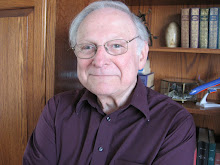A newspaper description of an upcoming
episode of the British detective series “Inspector Lewis” referred to a victim
of a “heroine overdose.” At first I thought the poor soul must have had to
endure too much Scarlett O’Hara or Jane Eyre or some other admirable female
figure and longed for masculine role models. But then, quick as a flash, I
realized that the writer meant “heroin” and not “heroine.”
The two words are entirely different, as
you realize. But their origins are related. Heroine,
with the final “e,” is a mythological or legendary woman having the qualities
of a hero, and by extension any woman who is admired for her achievements. It
is probably most frequently used to mean the principal female character in a
literary or dramatic work. First used in 1609, its root is the Greek hērōinē, feminine of hērōs, “one who serves or protects.”
Heroin, on the other hand, is a brand name
for diacetylmorphine trademarked by the German drug company Bayer. It was
marketed in 1895 as an over-the-counter cough suppressant. Bayer’s advertising
proclaimed it to be “non-addictive,” which proved to be something of an exaggeration.
Like the other heroine, Heroin was also derived from the Greek hērōs, because of its perceived “heroic”
effects upon the user.
The Bard of Buffalo Bayou eschews heroin, and heroines eschew him. So it works both ways.
I get no kick from cocaine,
As Cole Porter chose to explain.
But he'd go at full throttle
With
a swig from a bottle
Of Moët & Chandon champagne.
Monday, August 8, 2016
Subscribe to:
Post Comments (Atom)


No comments:
Post a Comment